The Best Brake Pads To Stop You Safely

When it comes to maintenance items on your vehicle, one of the most important components you need to pay attention to are brake pads. Having high-quality brake pads could save you from getting into an accident, and they should be replaced regularly. Unfortunately, shopping for the best brake pads can be cumbersome and tedious, with hundreds of options available in the market that cover a wide range of prices.
So here’s a breakdown of recommendations to help make your shopping experience a bit simpler. Keep in mind that most brake pads are sold separately for the front and rear, so make sure you’re getting the correct product for what you need.
For more information on brake pads, refer to our table of contents.
Table of contents
- 1. Editor's Choice: NRS Brakes Galvanized Brake Pads
- 2. Best Premium Option: Brembo Brake Pads
- 3. Best Budget Option for Rear Brake Pads: ACDelco Advantage Ceramic Rear Brake Pads (14D698CH)
- 4. Quietest Brakes: Wagner ThermoQuiet
- 5. Bosch QuietCast Premium Ceramic Rear Brake Pads (BC905)
- 6. ACDelco Professional Ceramic Front Brake Pads (17D1367CH)
- 7. Akebono ProACT Ultra-Premium Ceramic Brake Pad Set (ACT1089)
- 8. Power Stop Z23 Evolution Sport Front Brake Pads
- 9. KFE Ultra Quiet Advanced Premium Ceramic Front Brake Pads (KFE914-104)
- 10 Bosch Blue Brake Pads (BE923H)
- Everything You Need to Know About Brake Pads for Your Car
- What Are The Different Types of Brake Pads?
- Semi-metallic Brake Pads
- Organic Brake Pads
- Ceramic Brake Pads
- When Should I Replace My Brake Pads?
- Can I Replace My Brake Pads?
- How Long Will My New Brake Pads Last?
- Tips to Make Your Brake Pads Last Longer
- Recent Updates:
1. Editor's Choice: NRS Brakes Galvanized Brake Pads
After decades of supplying its patented galvanized and mechanical fusion brake technology to big name OEMs, NRS brakes are now available to everyday consumers. That experience means that NRS Brakes have lots of applications for all manner of vehicles, that all fit and function right out of the box come time for replacement.
What is galvanization, and why does it matter for brakes? Galvanization is a process that coats the entire steel backing plate with zinc, fighting off corrosion. Modern brake pads, especially aftermarket ones, tend to come painted or untreated. As road grime finds its way into the pads, it causes them to wear prematurely, and can even lead to a full delamination, where the friction pad material disconnects from the backing plate. NRS Brakes’ galvanized brakes, however, ensure that the steel does not deteriorate and gives the friction material the opportunity to fully wear down, making it the longest-lasting brake pad in the market. NRS Brakes then uses the company’s mechanical fusion technology to attach the friction pad to the plate, instead of an adhesive or glue that’s susceptible to heat and contaminants—two things a car’s braking system faces on a daily basis.
The payoffs are two-fold: NRS brake pads can outlast traditional pads, while also offering quieter operation and improved braking performance. What’s more, the company tests all its brakes beyond the standards required of OEMs. Speaking of OEMs, NRS Brakes carries all 83 Z Numbers that have been identified by the FMSI. Applications bearing a Z Number mean that the OE has specified the friction to be mechanically fused to the steel backing plate. And best of all? They’re produced in Canada.
Pros | Patented tech extends life and performance, OEM-quality fitment, galvanized for rust protection |
Cons | Premium Priced |
2. Best Premium Option: Brembo Brake Pads
Brembo is among the most well-respected and well-known brands in the braking industry. So, if you’re looking for the best-performing pads, we recommended to go with the Brembo name. Specializing in braking components, Brembo’s brake pads are engineered and designed to enhance braking power, helping minimize braking distance while offering a quiet and safe braking experience. Many of the company’s products feature Brembo’s multi-layer ESE (elastomer-steel-elastomer) signature red shim, so you know you’re getting a Brembo product. This shim also helps dampen noise and minimizes vibrations.
Most of Brembo’s offerings you’ll find online are ceramic brake pads that are created through an Original Equipment Direct Molding Pressing Process to provide an accurate and proper fitment for your vehicle. This process uses extreme pressure to compress friction materials, providing a balanced bonding to the backing plate. Afterward, Brembo puts their pads through a thermal scorching process to lessen running-in and fading.
Pros | Brembo brand name, great performance, signature red shim dampens noise and minimizes vibrations, ceramic pads |
Cons | Price, produces a good amount of brake dust |
3. Best Budget Option for Rear Brake Pads: ACDelco Advantage Ceramic Rear Brake Pads (14D698CH)
Part of ACDelco’s Advantage Ceramic brake pad lineup, these pads are affordable and offer great performance for the rear brakes. Using a ceramic formulation that uses less metal, these pads provide quality braking power in a quiet and low-dusting package. Available for nearly all makes and models, these pads use basic shims, slots, and chamfers to help diminish noise, vibration, and braking harshness.
Ready to be installed right out of the box, the overwhelming majority of owners are satisfied with the performance these pads have to offer, especially at the price. They’re relatively quiet, fit well, and make little to no noise. A small number of owners, however, have experienced cracking with their brake pads.
Pros | Price, good braking performance, quiet, low-dusting, uses basic shims, slots, and chamfers |
Cons | Some owners have experienced cracking with their pads |
4. Quietest Brakes: Wagner ThermoQuiet
For most cars in everyday conditions, you're not going to notice a difference in performance between one set of pads and another. Some will last longer than others, some will stand up to more abuse or heavy-duty use, and some are just higher quality. Wagner's long-running TQ series promised original equipment quality brake performance but in a package that is designed to reduce brake noise.
The copper-free pad is bonded to noise- and vibration-reducing underlayment compound, which sandwiches the steel backing plate. The pads themselves are laser shaped with tapered edges that reduce judder against brake discs and are made with a proprietary OE25 semi-metallic formulation that can outperform other pads while producing less brake dust to make your wheels dirty.
Wagner ThermoQuiet brake pads have a two-year/24,000-mile limited warranty, and most applications include stainless steel hardware.
Pros | Like the name says, quiet, and low dust, too |
Cons | Coating chips easily, which can lead to rust |
5. Bosch QuietCast Premium Ceramic Rear Brake Pads (BC905)
If you’re in the market for replacement rear brake pads, Bosch’s QuietCast Premium should be at the top of your list. Bosch is one of the most popular brands when it comes to automotive replacement parts and is often used by automakers as a supplier for original equipment (OE) components. These brake pads are engineered to deliver exceptional stopping power and quiet operation while producing as little brake dust as possible.
Helping contribute to quiet operation, these brake pads feature a shim style that is heated and pressure cured between two layers of steel, providing lower noise, increased strength, and corrosion resistance. When it comes to performance, Bosch’s QuietCast Premium uses the same aluminum-based alloy used in aerospace engineering. These are copper-free brake pads that are already compliant with 2025 Copper Free legislation.
Engineered, tested, and manufactured in North America, it’s very likely these pads will fit your application since Bosch offers best-in-class coverage for all vehicles.
Pros | Quiet performance, OE-style slots and chamfers, advanced ceramic friction formula, OE-style rubber core shim, wide range of applications |
Cons | Some complaints of squealing, some pads were received missing wear indicators and/or sensors |
6. ACDelco Professional Ceramic Front Brake Pads (17D1367CH)
For front brake pads, our recommendation comes from ACDelco’s Professional Ceramic line. These brake pads have been tested to SAE J2784 for braking effectiveness, as well as Noise/Vibration/Harshness (NVH) and durability/wear testing for assurance of quality. Using ceramic, semi-metallic, and organic formulas, these brake pads provide safety and reliability for a wide range of vehicle applications.
Helping to reduce noise, vibration, and braking harshness, ACDelco has outfitted these pads with premium shims, slots, and chamfers. They also have a stamped backing plate, which allows for proper pad movement within the caliper assembly. The stamped backing plate also helps reduce noise, prevents a pulsing brake peddle, and protects against premature wear. Each brake pad has its friction material molded to the backing plate for bond integrity.
ACDelco is one of the most trusted brands in the automotive industry and is the true General Motors Original Equipment parts brand, manufacturing over 90,000 GM OE and other parts.
Pros | Trusted brand, SAE J2784 tested, premium shims, slots, and chamfers, stamped backing plate, integrally molded, price |
Cons | Only a small amount of lube is provided, small number of noise complaints |
7. Akebono ProACT Ultra-Premium Ceramic Brake Pad Set (ACT1089)
Although a bit pricier than other options on this list, Akebono’s ProACT Ultra-Premium Ceramic Brake Pad Set is a high-quality offering available for domestic and Asian vehicles. Akebono is the largest supplier of OE pads to automakers in North America, so you know you’re getting an OE-quality product that is suitable for a majority of car owners.
These pads are designed using vehicle-optimized friction formulations with a focus on eliminating noise, vibration, and harshness while severely limiting brake dust. These are great replacement brake pads for OE ceramic units but can also serve as an upgrade from conventional pads.
Along with providing low dusting and smooth braking, these pads will also provide improved pad wear performance, which means longer times in between needing new pads.
Pros | Extremely reputable manufacturer, high-quality pads, ultra-quiet performance, long lasting durability |
Cons | Small amount of included lubricant, friction level may be less than some OE brake pads |
8. Power Stop Z23 Evolution Sport Front Brake Pads
If you’re looking for a high-performance option and willing to pay the price for it, take a look at the Power Stop Z23 Evolution Sport brake pads. These pads feature a carbon fiber-infused ceramic formula to deliver superior braking power and performance. Helping extend the life of these brake pads by resisting rust and corrosion is a powdercoated backing plate, while premium rubberized shims help deliver noise-free braking. These are also chamfered and slotted like OE pads to help reduce noise.
As a performance brake pad, these will resist fade up to much higher temperatures than standard OE units. Each brake pad set comes with ceramic brake lubricant, while certain applications will also include a premium stainless steel hardware kit and bin bushings.
Pros | Carbon fiber ceramic formula, great braking performance, very minimal brake dust, low noise, powdercoated backing plate, resists fade up to higher temperatures than conventional pads, includes ceramic brake lubricant |
Cons | Tad more expensive than normal ceramic/OE replacement brake pads |
9. KFE Ultra Quiet Advanced Premium Ceramic Front Brake Pads (KFE914-104)
From KFE comes these Ultra Quiet Advanced Premium Ceramic brake pads, an OEM fit, and no hassle limited warranty. These pads will deliver solid performance with low noise thanks to dual rubber shims that dramatically reduce vibration noise. KFE’s pads also require less break-in time since these undergo a thermo-scorched manufacturing process.
Offering enhanced brake bite, these pads also have long life slots and chamfered edges, further contributing to pad life and less noise. Keep in mind, however, that not all applications will have slotted and chamfered brake pads.
These pads are manufactured with 100% asbestos-free materials and meet the 2021 national standard material safety standards.
Pros | Limited warranty, OEM fit, low noise, reduced break-in time, slotted/chamfered edges on some applications |
Cons | Limited fitments, good amount of brake dust |
10 Bosch Blue Brake Pads (BE923H)
Another offering from Bosch is the company’s Blue brake pad featuring advanced platform-specific friction material formulations—NAO-Ceramic and semi-metallic formulas—to deliver optimal performance. These pads use OE-style multi-layer shims for superior noise dampening, while a rust-inhibiting coating helps control corrosion. Included with each set of pads is a hardware kit and synthetic lubricant, while slots and chamfers on certain applications match the OE design for quick and easy installation.
These pads are ideal for the everyday driver who is looking for performance at an affordable price. They go through the same testing and engineering process as Bosch’s premium braking products but are a more budget-friendly option.
Pros | Affordable, OE-style multi-layer shims, NAO-Ceramic and semi-metallic formula, rust inhibitive coating, includes lubricant |
Cons | Tight fit on some applications, included lubricant isn't much |
Everything You Need to Know About Brake Pads for Your Car
As we mentioned before, brake pads are extremely important when it comes to the safety of your vehicle. They’re a key component to slowing down your car efficiently and quickly, and you’ll likely know when it’s time to replace your brake pads because braking performance has noticeably suffered. Unfortunately there are no predefined time periods as to when your brake pads should be replaced, as that naturally depends on the amount of driving you do and the type of driving you do. Typically however, most companies recommend changing your pads within two years.
Below, we’ll go into detail about everything you need to know about brake pads, including the different types, when you should replace them, and even tips on how to make them last longer.
What Are The Different Types of Brake Pads?
Modern vehicles leave the assembly line with a variety of different brake pads as standard equipment. Some automakers will equip conventional, non-performance vehicles with more affordable pads to keep costs down, while high-performance vehicles likely come with high-performance pads. Some vehicles may even use a combination of different types of brake pads, with an emphasis on performance in the front of the vehicle.
Below, we take a look at the most popular types of brake pads you’ll find on the shelf at your local auto parts store or online.
Semi-metallic Brake Pads
While ceramic brake pads are getting more and more common, semi-metallic brake pads are still the most popular. Mostly made of metal, these pads are durable and efficient, while offering solid durability. Typically, semi-metallic brake pads feature metal content between 30% and 65%, which is mixed with graphite, copper, or steel wire wool. The result is a pad that offers good heat transfer capability, which is important to keep brakes performing as well as possible.
Look for pads with low copper content (Wagner's OE25 is less than 0.5% copper), as it's an environmental pollutant and potential health hazard.
Pros | Good heat transfer capability, long-term durability, high metal content |
Cons | Produces more brake dust than other pads, can be noisier than other pads |
Organic Brake Pads
Softer than semi-metallic brake pads, organic brake pads tend to have less than 20% metal in their construction. These pads have lower noise and produce less brake dust than other more high-performance pads. Some organic pads will also lessen the wear on your rotors, making them last longer.
Normally you’ll find that organic pads are made with different fibers and resins to withstand high temperatures, but they typically wear quicker than semi-metallic brake pads.
Pros | Lower noise levels, less brake dust, less wear and tear on your rotors |
Cons | Pad itself wears more quickly than other types of brake pads due to softer material, not the best performance |
Ceramic Brake Pads
As the latest solution in the brake pads market, ceramic pads are slowly becoming more and more popular with manufacturers. Constructed with ceramic fibers and an assortment of non-ferrous fiber materials, ceramic pads are a solid solution for a wide range of temperatures. These pads typically have lower noise levels and less brake dust, but they’ll cost noticeably more. They can also be louder than other brake pads.
The good news is, most companies are producing ceramic brake pads , which makes pricing more competitive. You’ll notice most of our recommendations are ceramic brake pads, as they strike a solid balance between performance and price, arguably more than semi-metallic pads.
Pros | Good performance, manages heat well, lower noise levels, less brake dust |
Cons | More expensive than other types of brake pads |
When Should I Replace My Brake Pads?
Given the variety of brake pads, vehicles, and driving styles that exist in our world, there’s no clear answer to when you should replace your brake pads. There are however, a few guidelines you can follow or things to look for that indicate when it’s time to swap out for new pads.
Warning lights
Some vehicles are equipped with a brake pad warning system, with the vehicle notifying you when you need to change your pads. These systems use a simple sensor, which activates when brake pads wear to a certain level. Unfortunately not all vehicles are equipped with this system, especially older and more affordable vehicles.
Increased noise
One of the biggest indicators that you need new brake pads is if you’re hearing screeching or squealing when you’re braking, or even in driving when you're not using the brakes. That’s typically a sign that your brake pads have worn to the wear indicators, so you’re experiencing metal-on-metal contact with your rotor. It isn't damaging anything, as these thin metal strips just lightly brush the steel rotor surface and make noise. Your brakes aren't completely worn out when you reach the wear indicators, but they're typically about 2/3 used up, so change them as soon as you can.
Not all brake pads include wear indicators, and some need to be bent into place when you install them.
Car pulling to one side
There are numerous reasons why your vehicle would be pulling to one side, but one cause could be worn brake pads. If your vehicle is pulling hard to one side, make sure to check if you need new brake pads, among other things, such as a flat tire.
Vibrations
If you’re experiencing vibrations during hard braking, this could be the result of worn or overheated brake pads or warped rotors. Either way, you’ll want to check your brakes to make sure nothing needs to be replaced.
Visual checks
There is always the option of simply looking at your pads to see if they need to be replaced. If your wheels allow, you can see the outside of your brake pad—the portion that is pressed against the rotor—to see if they’ve been worn down. Normally if you see three millimeters or less of pad remaining, it’s time to get a new set.
Can I Replace My Brake Pads?
Like most automotive-related maintenance tasks, the answer to that question depends on how comfortable you are working on your own car. Replacing brake pads however, is a fairly simply and straightforward task, similar to changing your oil. If you have some basic knowledge of tools and how to work on your car, it’s not a difficult job and there are plenty of people who changes their own brake pads from the comforts of their garage.
It does however, require the right tools and materials, and if you’re not experienced or comfortable working on your car, find a friend who is or consult a professional. Keep in mind that brakes are one of the most important safety features on your car, so you don’t want to install your brake pads incorrectly.
How Long Will My New Brake Pads Last?
It’s only natural to wonder how long your new brake pads will last once you’ve installed them. But the answer isn’t straightforward, since again, it comes down to which types of brake pads you’re using and your driving style. If you’re often driving on the freeway with little to no traffic, your brake pads will experience less wear and tear than a person who is stuck in stop-and-go city traffic all day long.
It’s important to regularly monitor the wear on your brake pads, so you know when they need to be replaced.
Tips to Make Your Brake Pads Last Longer
Although we can’t tell you how long your new pads will work, there are some general tips to make sure they last as long as possible.
- Try to anticipate when you’ll need to brake so that it doesn’t have to be done harshly
- Slow down before intersections if you know you have to stop, this way you don’t have to use your brakes as much
- Watch your speed since the faster you go, the more you have to apply your brakes when it’s time to slow down
- Pay attention to traffic ahead of you, sometimes you can simply let off the accelerator instead of using your brakes if you anticipate a slow down in upcoming traffic
- Toss out any excessive weight, since a heavier car takes more stopping power
Now it’s worth mentioning that you don’t want to necessarily make a conscious effort to preserve your brake pads. Given their cost, you should always use your brakes as much as necessary to be safe on the road. In other words, don’t go out of your way to try to get as much life possible out of your brake pads if it comes at the cost of safe driving.
Recent Updates:
February 7, 2023: Added NRS Galvanized break pads.
December 8, 2022: Updated product links.
May 11, 2022: Removed Wagner QuickStop and Centric Posi Quiet brake pads; moved Wagner ThermoQuiet from eighth to third place in recommendations. Updated FAQ sections.
May 20, 2021: Updated with a promoted product recommendation.
October 30, 2020: Updated with info on galvanized brake pads.
We are committed to finding, researching, and recommending the best products. We earn commissions from purchases you make using the retail links in our product reviews. Learn more about how this works.

Jason Siu began his career in automotive journalism in 2003 with Modified Magazine, a property previously held by VerticalScope. As the West Coast Editor, he played a pivotal role while also extending his expertise to Modified Luxury & Exotics and Modified Mustangs. Beyond his editorial work, Jason authored two notable Cartech books. His tenure at AutoGuide.com saw him immersed in the daily news cycle, yet his passion for hands-on evaluation led him to focus on testing and product reviews, offering well-rounded recommendations to AutoGuide readers. Currently, as the Content Director for VerticalScope, Jason spearheads the content strategy for an array of online publications, a role that has him at the helm of ensuring quality and consistency across the board.
More by Jason Siu



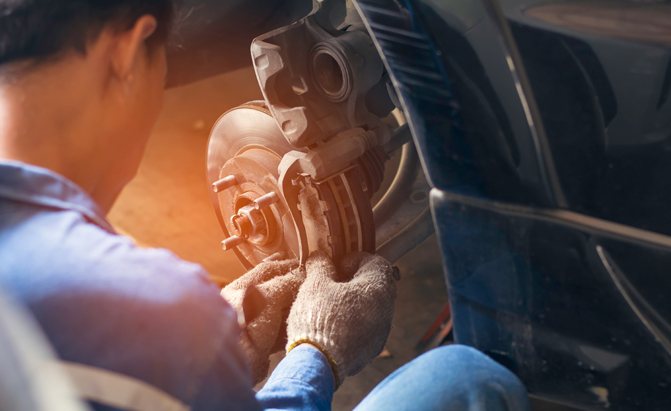





























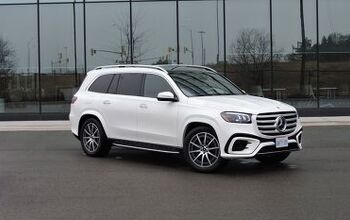

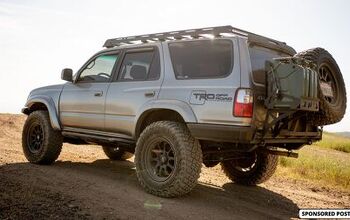

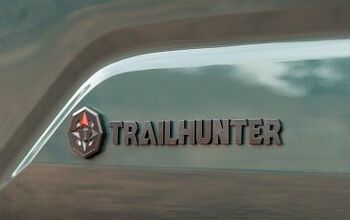

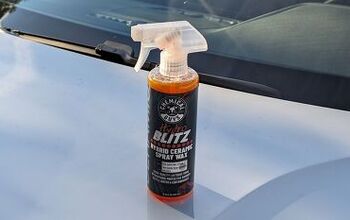
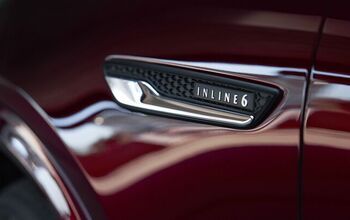







Comments
Join the conversation
As a proud owner of a Mahindra Cars , I can't recommend this category enough. From DIY tips to industry trends, it's a comprehensive resource that adds value to every enthusiast's journey.